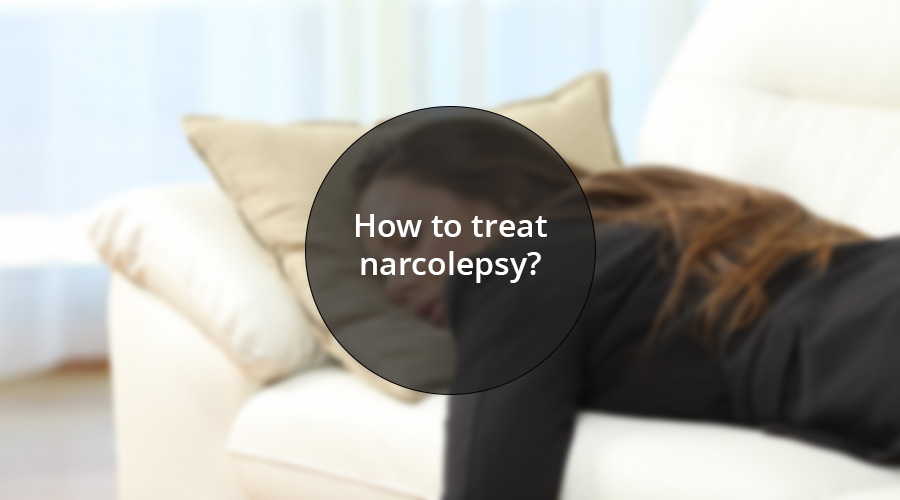According to the National Sleep Foundation, narcolepsy is a sleep disorder that causes people to have episodes of uncontrollable daytime sleepiness. There is no one-size-fits-all treatment for narcolepsy, but there are several ways to help manage the condition. Some treatments include medications, lifestyle changes, and surgery. If you are struggling with narcolepsy, it is important to talk to your doctor about all of your options.
What is narcolepsy?

Narcolepsy is one of the many sleep disorders. It is a chronic sleep disorder that causes people to experience sudden attacks of sleepiness, typically during the daytime. Narcolepsy patients often find it difficult to stay asleep or wake up from their slumber, which can lead to problems with work, school, and other activities. have daytime sleepiness, which means they need more sleep than average during the day.
Symptoms

Narcolepsy is a sleep disorder that causes people to have sudden episodes of profound sleepiness, often accompanied by loss of muscle tone or hallucinations. It is a sleep disorder characterized by excessive daytime sleepiness and uncontrollable episodes of sleep. One of the most common narcolepsy symptoms is sudden, overwhelming tiredness that can last for several hours. Other symptoms may include extreme lethargy, hallucinations, and seizures.
Causes

There is no one definitive answer to the question of what causes narcolepsy; however, there are a number of possible causes that have been documented in research. Some possible causes include genetics, environmental factors, and neurological disorders. Narcolepsy may also be related to the way your brain processes dopamine.
Scientists know little about the cause of Narcolepsy, but they do know that it is a neurological disorder that affects the brain. People with Narcolepsy experience sudden episodes of uncontrollable sleepiness that can last from minutes to hours. These episodes can occur at any time and can be triggered by anything from sunlight exposure to stress. There is currently no cure for Narcolepsy, but treatments are available that can help manage symptoms.
Types of narcolepsy

There are three types of narcolepsy: cataplexy, hypnopompic hallucinations, and hypnagogic hallucinations, sleep paralysis.
Cataplexy. Cataplexy is a sudden loss of muscle control, typically occurring during laughter or excitement. Some people with narcolepsy may also experience cataplexy, raising questions about whether the two conditions are distinct conditions. Narcolepsy is a sleep disorder characterized by uncontrollable episodes of sleepiness and REM sleep. Cataplexy occurs when the person falls suddenly, usually during a laughter or surprise attack.
Hypnopompic hallucinations. Hypnopompic hallucinations (HH) are a type of hallucination that typically occurs during sleep and is characterized by vivid, often disturbing dreams that occur just before falling asleep or shortly after waking up. HH can occur in individuals of any age, but are more common in adults over the age of 50. While HH can be a nuisance, they are not considered a serious psychiatric disorder. These episodes happen while the person is falling asleep and are usually intense visions of people or animals.
Hypnagogic hallucinations. Hypnagogic hallucinations are brief, intense, and often unexpected experiences that can happen during sleep. They can include things like seeing or hearing things that aren’t there, feeling like you’re falling or floating, or having intense sensations in your body. Most people only experience one or two hypnagogic hallucinations during their lifetime, but some people experience them frequently.
Sleep paralysis. Sleep paralysis is a frightening disorder in which a person is awake and aware, but cannot move or speak. The paralysis usually lasts only a few seconds, but it can be terrifying because it feels like one is floating above one’s body or unable to control one’s own movements. There is no known cause for the condition, but it seems to occur more often in people who are anxious or stressed. There is no cure for sleep paralysis, but treatments include relaxation techniques and medications.
How common is narcolepsy?

According to the Harvard University Sleep Medicine website, narcolepsy is a sleeping disorder that causes people to have sudden episodes of sleepiness and REM sleep (rapid eye movement) behavior disorder. It affects approximately 1 in 25 people in the United States and is more common in men than women. It is a chronic condition that is characterized by episodes of hypersomnia or excessive sleepiness, often accompanied by sudden attacks of paralysis or hallucinations. Narcolepsy can be very disabling, and people with the disorder often need extensive assistance to live independently. Narcolepsy is often treated with medication and lifestyle changes, but it can be hard to know if you have it and to find the right treatment.
How is narcolepsy diagnosed?

There is no single test that can definitively diagnose narcolepsy. Asleep specialist may use a variety of methods to rule out other possible causes of symptoms before diagnosing narcolepsy. These methods may include a review of a person’s medical history, an examination of physical signs and symptoms, and tests such as blood tests, brain scans, and sleep studies. Narcolepsy can sometimes be diagnosed based on the person’s symptoms alone, though more often it is confirmed through additional testing.
Multiple sleep latency test. MSLT is a diagnostic procedure used to diagnose narcolepsy. Narcolepsy is a disorder characterized by excessive daytime sleepiness and multiple sleep episodes, which can result in serious consequences. The MSLT is a polysomnographic test that measures the time it takes for people to fall asleep and wake up after being asked to do so three times.
Narcolepsy and sleep apnea
Narcolepsy is a chronic sleep disorder that causes people to fall asleep suddenly and often have trouble staying asleep. It’s caused by a malfunction in the brain that leads to abnormal sleep patterns. People with narcolepsy might also have problems breathing during sleep, called sleep apnea. The two conditions are linked, and people with narcolepsy are more likely to have sleep apnea. Both conditions can cause problems with daily life.
How is narcolepsy treated?

Narcolepsy is a chronic sleep disorder that causes people to fall asleep unexpectedly and often for long periods of time. Narcolepsy can be hard to diagnose and treat, but there are some treatments that may help. Some medications work by stopping the person from falling asleep, while other treatments help the person stay awake during the day. Some patients also need to take daily medications to prevent excessive daytime sleepiness (eds).
Medications
Narcolepsy is a disorder of the central nervous system that causes people to experience overwhelming sleepiness and difficulty staying awake. There are many medications available to help people with narcolepsy, and each person may respond to different medications. Some common medications for narcolepsy include stimulants such as methylphenidate (Ritalin) and atomoxetine (Strattera), and antidepressants such as fluoxetine (Prozac). Another popular medication is called sodium oxybate orXyrem. There is no cure for narcolepsy, but these medications can help symptoms such as cataplexy and REM sleep attacks.
Selective serotonin reuptake inhibitors. Selective serotonin reuptake inhibitors (SSRIs) are a class of medications used to treat depression, anxiety, and other conditions. They work by increasing the amount of serotonin in the brain. SSRIs can also be used for the treatment of narcolepsy. Narcolepsy is a condition that causes people to have excessive daytime sleepiness (eds) and episodes of rapid eye movement (REM) sleep.
Tricyclic antidepressants. Tricyclic antidepressants (TCAs) are medications that are often prescribed to treat depression and other conditions. Some people also use them to help manage symptoms of narcolepsy. Antidepressants work by changing the way the brain processes information. TCAs can improve sleepiness and other symptoms of narcolepsy. However, it is important to talk with your doctor before starting TCA treatment if you have this condition.
Sodium oxybate (Xyrem). This medication is highly effective for cataplexy. Sodium oxybate helps to improve nighttime sleep, which is often poor in narcolepsy. In high doses it may also help control daytime sleepiness. It must be taken in two doses, one at bedtime and one up to four hours later. Sodium oxybate Xyrem can have side effects, such as nausea, bed-wetting and worsening of sleepwalking. It may cause dizziness, an upset stomach, or make you wet the bed or sleepwalk. It’s also very high in salt. It may not be right for you if you have high blood pressure, kidney problems, or certain heart conditions.
Narcolepsy treatment and pregnancy
There is still much unknown about narcolepsy, which makes it difficult to determine what specific treatments are necessary and how best to administer them. However, there is good news for those who are pregnant and suffer from this disorder. Treatment options for narcolepsy during pregnancy are beginning to improve, and new research suggests that some medications may be safe during pregnancy. Narcolepsy is not known to be associated with any adverse effects on pregnancy or childbirth.
Narcolepsy treatment and children
Children with narcolepsy experience excessive daytime sleepiness (eds), which can make school and other activities difficult. Narcolepsy is a chronic neurological disorder that is caused by an imbalance in the brain’s wake/sleep cycle. There is currently no cure for narcolepsy, but treatment options are available to help manage the condition. Some treatments include medication, lifestyle changes, and surgery.
The first Narcolepsy treatment for children was introduced in the early 2000s. In 2006, a phase III clinical trial demonstrated that intranasal oxytocin could improve sleep in children with narcolepsy. This treatment is now available as a generic medication and is considered to be the gold standard for treating this disorder.
Derivation
In conclusion, there are many treatment options for narcolepsy. Some people may need medication to help them stay awake, while others may need therapy or lifestyle changes. There are many options available, and each person’s treatment plan will be different. If you think you or someone you know may have narcolepsy, it is important to see a doctor to find out what the best treatment plan is for you.
FAQ
What is the most effective treatment for narcolepsy?
There is no one cure for narcolepsy, but there are many different treatments that can be effective. The most effective treatment for narcolepsy depends on the person’s symptoms and needs. Some people need medication to sleep during the day, others need to sleep during the night, and still others need both daytime and nighttime sleep treatments. Some of the most common treatments include stimulants like modafinil or wakefulness suppressants like eszopiclone. Other treatment options include medication, sleep therapy, and lifestyle changes.
What triggers narcolepsy?
Narcolepsy is a sleep disorder that affects people of all ages. It is caused by a malfunction in the hypocretin neurotransmitter system in the brain. This system controls daytime wakefulness and REM sleep. Narcolepsy can also be triggered by certain medical conditions, such as head injuries, tumors, and epilepsy. There are many triggers for narcolepsy, but not everyone who has them experiences every trigger. Some people may only experience a few triggers, while others may have a wide range of triggers.
What is the best drug for narcolepsy?
There is no single cure or best drug for narcolepsy, but there are a few drugs that have been shown to be effective in treating the disorder. Some of the most common drugs for the treatment of narcolepsy are stimulants like methylphenidate and atomoxetine, catapresan, clonazepam, and oxcarbazepine, antidepressants like fluoxetine and lithium, and stimulants like modafinil and methylphenidate. Each drug has its own set of side effects, so it is important to work with a doctor to find the best treatment for you.
Does Adderall help with narcolepsy?
Adderall is a medication that is used to treat attention-deficit hyperactivity disorder (ADHD). Researchers are still investigating the potential benefits of adding Adderall to treatment for narcolepsy. Some researchers are investigating whether Adderall, an amphetamine-type stimulant, might help people with narcolepsy stay awake. There are currently no studies that have looked at the long-term effects of using Adderall for the treatment of narcolepsy, and more research is needed before any conclusions can be made.
What over the counter drugs can you take for narcolepsy?
There are many over the counter drugs that can be used to treat narcolepsy. These medications include antidepressants, stimulants, and sleep aids. Some people find that over the counter drugs work well for them, while others need to use prescription drugs. It is important to talk with a doctor about the best treatment for your individual case.

